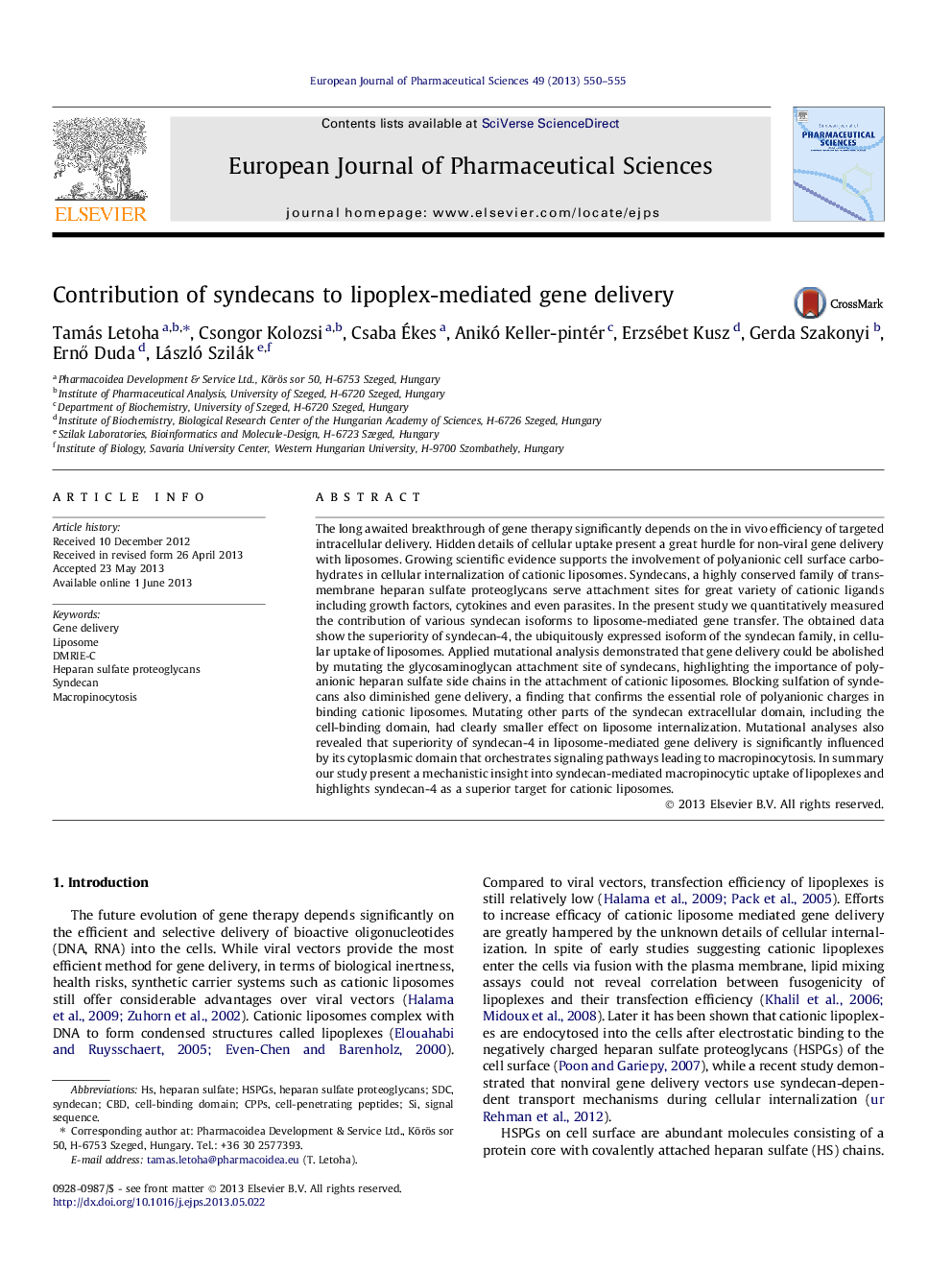| کد مقاله | کد نشریه | سال انتشار | مقاله انگلیسی | نسخه تمام متن |
|---|---|---|---|---|
| 2480848 | 1556206 | 2013 | 6 صفحه PDF | دانلود رایگان |

The long awaited breakthrough of gene therapy significantly depends on the in vivo efficiency of targeted intracellular delivery. Hidden details of cellular uptake present a great hurdle for non-viral gene delivery with liposomes. Growing scientific evidence supports the involvement of polyanionic cell surface carbohydrates in cellular internalization of cationic liposomes. Syndecans, a highly conserved family of transmembrane heparan sulfate proteoglycans serve attachment sites for great variety of cationic ligands including growth factors, cytokines and even parasites. In the present study we quantitatively measured the contribution of various syndecan isoforms to liposome-mediated gene transfer. The obtained data show the superiority of syndecan-4, the ubiquitously expressed isoform of the syndecan family, in cellular uptake of liposomes. Applied mutational analysis demonstrated that gene delivery could be abolished by mutating the glycosaminoglycan attachment site of syndecans, highlighting the importance of polyanionic heparan sulfate side chains in the attachment of cationic liposomes. Blocking sulfation of syndecans also diminished gene delivery, a finding that confirms the essential role of polyanionic charges in binding cationic liposomes. Mutating other parts of the syndecan extracellular domain, including the cell-binding domain, had clearly smaller effect on liposome internalization. Mutational analyses also revealed that superiority of syndecan-4 in liposome-mediated gene delivery is significantly influenced by its cytoplasmic domain that orchestrates signaling pathways leading to macropinocytosis. In summary our study present a mechanistic insight into syndecan-mediated macropinocytic uptake of lipoplexes and highlights syndecan-4 as a superior target for cationic liposomes.
Figure optionsDownload high-quality image (44 K)Download as PowerPoint slide
Journal: European Journal of Pharmaceutical Sciences - Volume 49, Issue 4, 16 July 2013, Pages 550–555